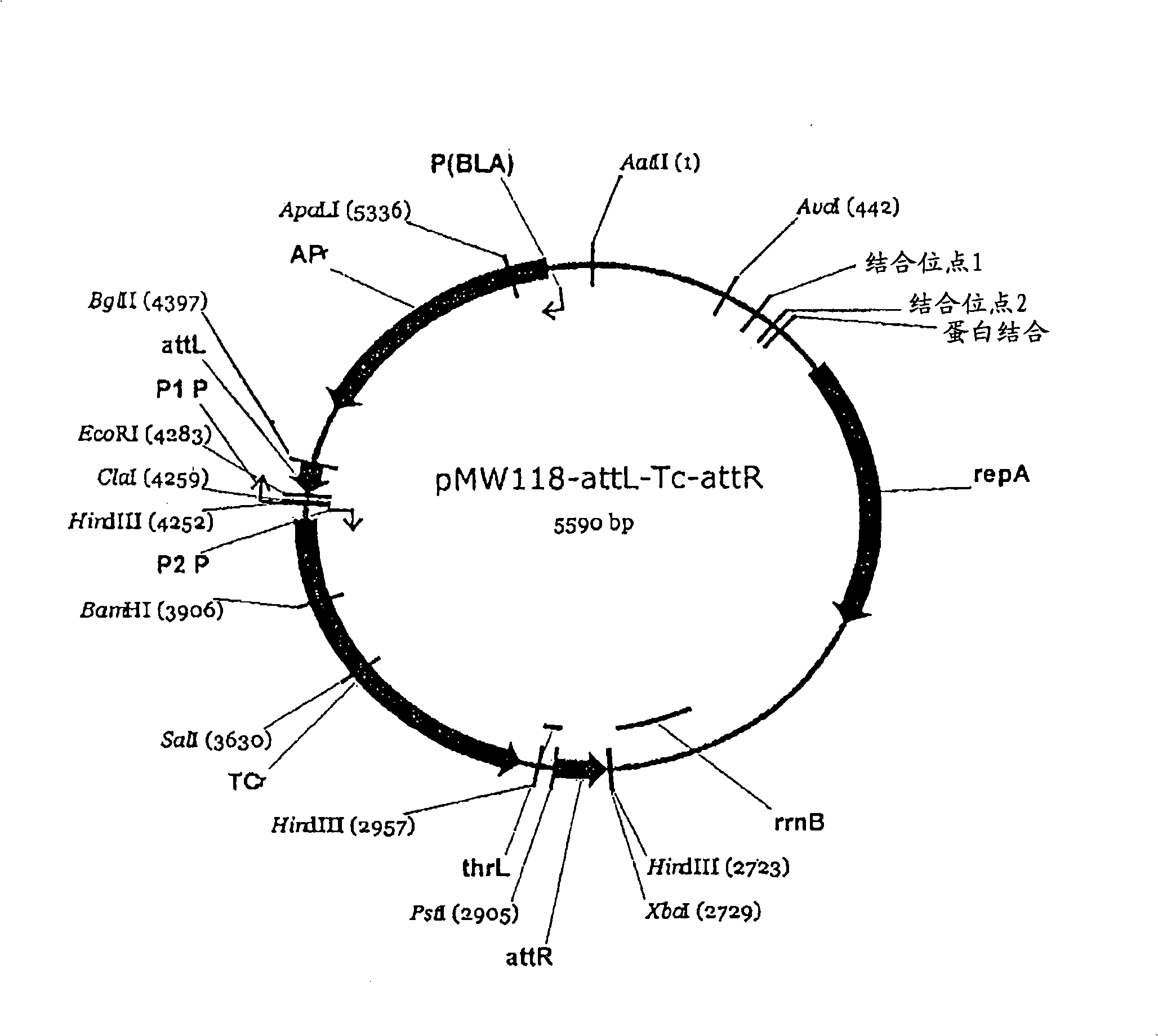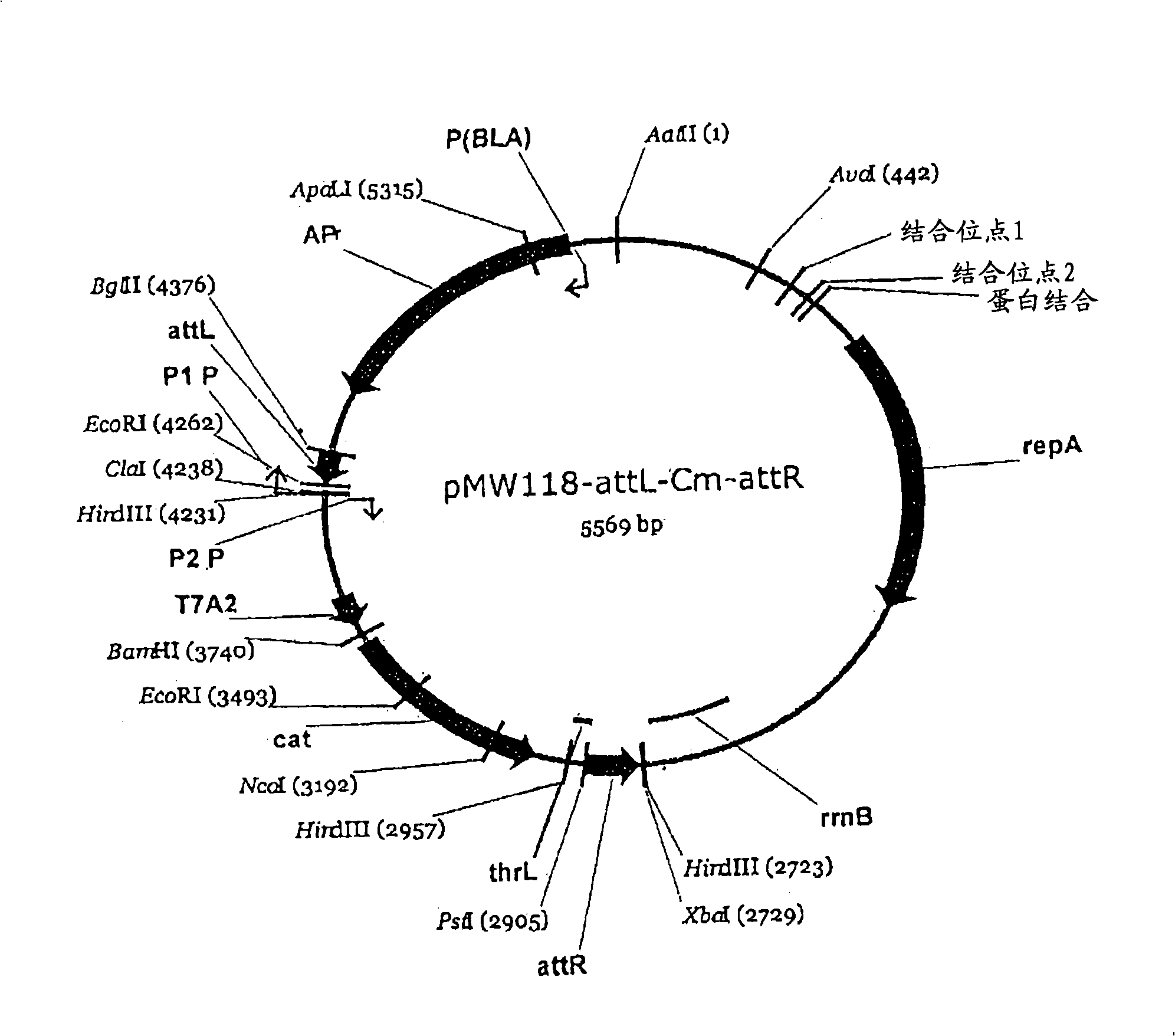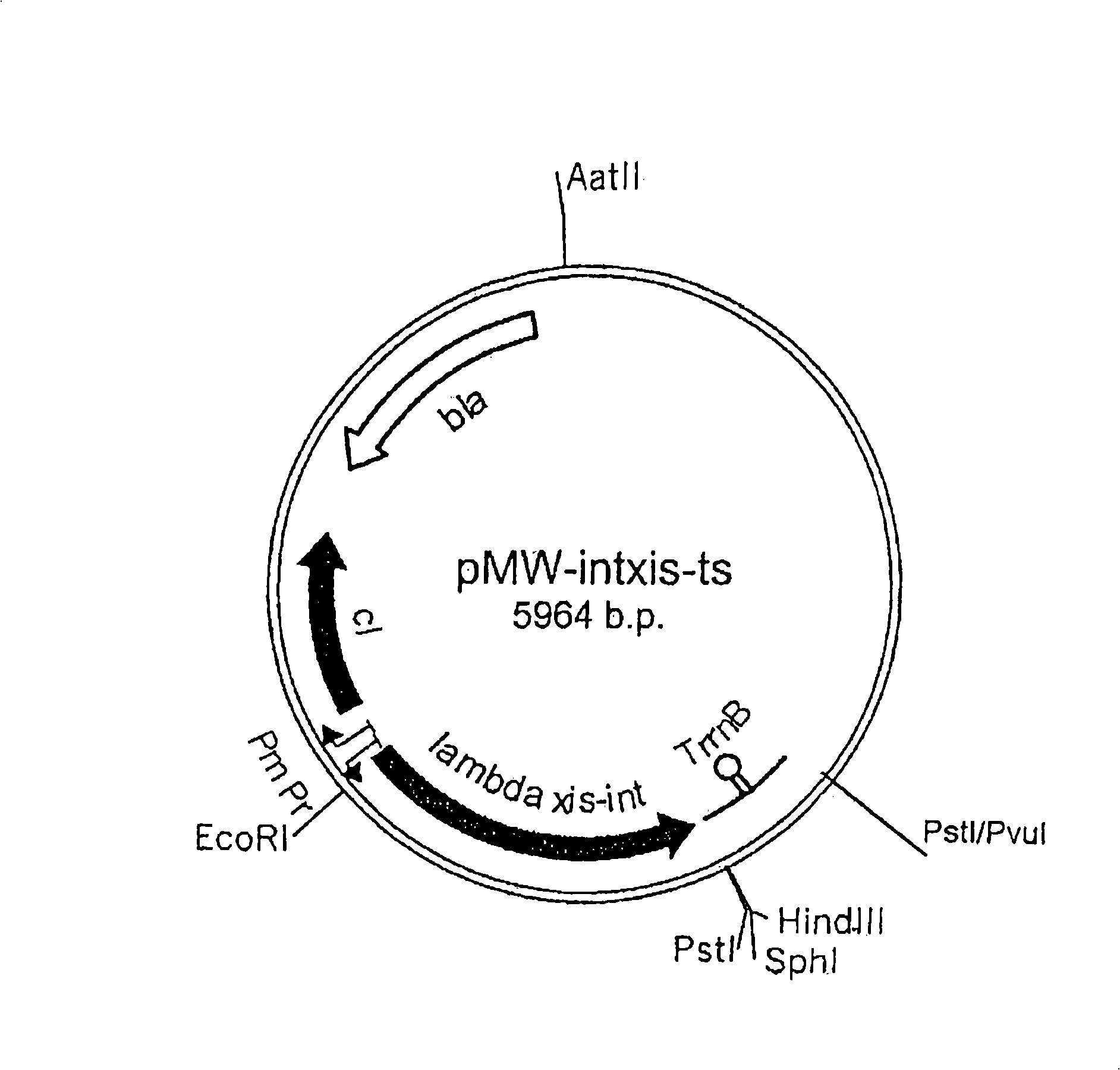An L-amino acid-producing bacterium and a method for producing L-amino acids
An amino acid, gene technology, applied in the field of L-threonine and L-glutamic acid to produce L-amino acids such as L-lysine, can solve problems such as unreported
- Summary
- Abstract
- Description
- Claims
- Application Information
AI Technical Summary
Problems solved by technology
Method used
Image
Examples
Embodiment 1
[0162] Example 1: Construction of a plasmid for bglF overexpression
[0163] The whole genome sequence of the chromosome of E. coli (E. coli K-12 strain) has been determined (Science, 277, 1453-1474 (1997)). Based on the nucleotide sequence of the bglF gene, a synthetic oligonucleotide of SEQ ID No. 1 with a HindIII site was used as a 5' primer, and a synthetic oligonucleotide of SEQ ID No. 2 with an XbaI site was used as a 3' Primers, PCR was performed using chromosomal DNA of Escherichia coli MG1655 strain as a template. The PCR product was treated with restriction endonucleases HindIII and XbaI to obtain a gene fragment containing bglF gene.
[0164] The purified PCR product was ligated with vector pMW219 (NipponGene Co., Ltd.) which had been digested with HindIII and XbaI, to construct plasmid pM-bglF for bglF overexpression. This plasmid is under the control of the lac promoter and places the bglF gene downstream of the lac promoter. pM-bglF was digested with HindIII a...
Embodiment 2
[0166] Example 2: Construction of a strain overexpressing the bglF gene and evaluation of the L-lysine production of the strain
[0167] As an L-lysine-producing Escherichia coli strain, a WC196ΔldcCΔcadA (pCABD2) strain was used as a parent strain. The Lys-producing plasmid pCABD2 (WO01 / 53459) containing the dapA, dapB and lysC genes was introduced into the WC196ΔldcCΔcadA strain. The bglF overexpression plasmid pM-bglF and ptsG overexpression plasmid pM-ptsG constructed in Example 1, and the control plasmid pMW219 were used to transform the WC196ΔldcCΔcadA (pCABD2) strain, and a kanamycin-resistant strain was obtained. After confirming that these plasmids have been introduced, the strain that introduced the bglF overexpression plasmid pM-bglF was named WC196ΔldcCΔcadA (pCABD2, pM-bglF); the strain that introduced the ptsG overexpression plasmid pM-ptsG was named WC 196ΔldcCΔcadA (pCABD2 , pM-ptsG); and the strain introduced with the control plasmid pMW219 was named WC196Δld...
Embodiment 3
[0184] Example 3: Effect of bglF overexpression on L-glutamic acid producing E. coli strains
[0185]An L-glutamic acid-producing Escherichia coli strain AJ12949 strain was used as a parent strain. The AJ12949 strain is a bacterial strain in which the activity of α-ketoglutarate dehydrogenase has been reduced, and was deposited with the Institute of Life Engineering, Institute of Industrial Technology (currently, Independent Administrative Agency, National Institute of Advanced Industrial Science and Technology, Depository of Licensed Microorganisms; Chuo 6, 1-1, Higashi 1-chome, Tsukuba-shi, Ibaraki-ken 305-8566, Japan), and under the Budapest Treaty on November 11, 1994 It was converted into an international deposit and given accession number FERM BP-4881.
[0186] The bglF overexpression plasmid pS-bglF used in Example 1 and the control plasmid pSTV29 were used to transform the AJ12949 strain, and a chloramphenicol-resistant strain was obtained. After confirming that the ...
PUM
 Login to View More
Login to View More Abstract
Description
Claims
Application Information
 Login to View More
Login to View More - R&D
- Intellectual Property
- Life Sciences
- Materials
- Tech Scout
- Unparalleled Data Quality
- Higher Quality Content
- 60% Fewer Hallucinations
Browse by: Latest US Patents, China's latest patents, Technical Efficacy Thesaurus, Application Domain, Technology Topic, Popular Technical Reports.
© 2025 PatSnap. All rights reserved.Legal|Privacy policy|Modern Slavery Act Transparency Statement|Sitemap|About US| Contact US: help@patsnap.com



